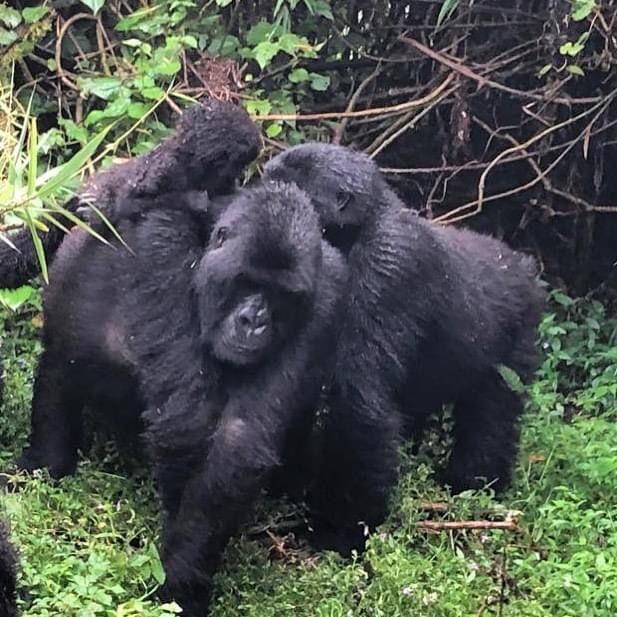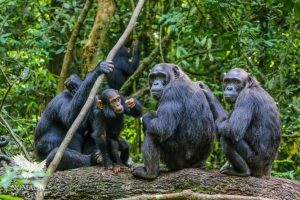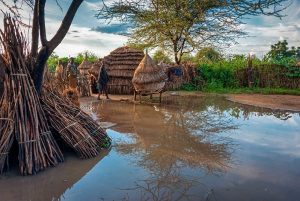Gorilla trekking benefits and conservation.
Gorilla trekking is one of the major tourism activities in the East African region. Travelers from all over the world visit Uganda, Congo, and Rwanda annually to view these amazing primates in their natural habitats. Other tourism activities in these three countries include game drives, nature walks, Gorilla trekking benefits and conservation.
bird watching, cultural visits, fishing, and boat rides, among others. Gorilla trekking is an activity that gives an opportunity of hiking through dense forests searching for gorillas. can be viewed up close at Rwanda’s Volcanoes National Park, DR Congo’s Virunga National Park, Uganda’s Mgahinga National Park, and Bwindi Impenetrable National Park.
It’s almost as if gorillas sense the importance of where they live. Gorillas act as the gardeners of the forest, helping to keep it healthy through their daily behaviors. Their role in this critical ecosystem reverberates across thousands of miles to the air and climate where we live. For our health and survival, we need those forests. As a result, we need to save gorillas.
We’re watching climate change play out in real time – wildfires in unexpected places, hurricanes in the desert, floods, and record-setting ocean temperatures. In the habitats where gorillas live, we’re seeing effects of warmer temperatures on indicator species like birds, insects, and amphibians. Plant regeneration patterns are changing, bird elevational ranges are increasing, and wetlands are shrinking – all suggestive of the effects of a warming planet. It’s clear: another way gorillas and humans are connected is that our futures are at risk.
Mountain gorillas show us the level of sustained effort it takes to save a species: an unwavering boots-on-the-ground presence, broad financial support, government leadership, and community involvement. It’s a lot, and it’s a lot to scale globally to save all wildlife. We need massive public and private commitment to prevent the extinction of iconic megafauna like gorillas, rhinos, elephants, and lions, and the thousands of other species that share their habitats. In so many wild spaces, conservationists simply lack the funds to tackle the enormity of the challenges.
Gorilla trekking serves as a vital financial pillar for conservation efforts, generating essential funding to protect mountain gorillas and their habitats. These allow them to participate in these treks, and the revenue collected is directly invested in various conservation initiatives. In Rwanda, a trekking permit costs $1,500, while in Uganda, it is $800, and in the Democratic Republic of Congo (DRC), it is $400. The value of these permits has increased over time due to the rising demand for this rare wildlife experience and a strong commitment to sustainable conservation practices. For instance, in the first half of 2022 alone, Rwanda’s Volcanoes National Park generated $11 million solely from gorilla trekking permits. This revenue supports key conservation activities, such as:
Anti-poaching patrols
Permit fees help finance the hiring, training, and deployment of wildlife rangers. These are responsible for patrolling gorilla habitats. These rangers play a crucial role in preventing poaching and other illegal activities that threaten gorillas. These activities include hunting for bushmeat, the illegal pet trade, or the sale of valuable body parts.
Habitat restoration
Funds from gorilla trekking contribute to reforestation projects and promote sustainable land use practices among local communities. They also help to protect gorilla habitats from human encroachment. By preserving and restoring forests, conservationists ensure that gorillas have a safe and thriving environment.
Gorilla monitoring and research
Permit revenues support primatologists and conservationists who closely monitor gorilla groups to assess their health, behavior, and overall well-being. This includes routine health checks, disease surveillance, and ecological research to refine conservation strategies and address any emerging threats.
Community development projects
A portion of the revenue from gorilla trekking is allocated to improving the livelihoods of communities living near gorilla habitats. This funding supports initiatives such as education, healthcare, clean water supply systems, and infrastructure development, like roads and hospitals.
The benefits of gorilla trekking and conservation.
Beyond its financial contributions, gorilla trekking plays a crucial role in raising awareness about primate conservation. Tourists who embark on these treks gain firsthand insight into the lives of mountain gorillas in their natural habitat. This immersive experience fosters a deeper appreciation for these great apes and the challenges they face, from habitat loss to poaching. By observing their social interactions, daily behaviors, and the delicate balance of their ecosystem, visitors develop a stronger connection to conservation efforts. This awareness often translates into greater public support for policies and initiatives aimed at protecting gorillas and their environment.
Gorilla trekking is not only one of Africa’s most thrilling eco-adventures but also a powerful tool for conservation advocacy. Many travelers return from their experience inspired to share their encounters and the lessons they have learned. This helps to further raise awareness about the urgent need to protect these endangered creatures. Their stories often spark curiosity and encourage others to learn more about the issues affecting gorillas, leading to increased engagement in conservation efforts. Ultimately, gorilla trekking serves as an educational journey that fosters global support for primate conservation. It also ensures the continuous survival of these magnificent animals
In conclusion.
Gorilla trekking has proven to be a vital tool in the conservation of these endangered primates. This unique eco-adventure generates essential funding, raises awareness, and actively engages local communities in protecting mountain gorillas. While certain risks exist, they are effectively managed through strict regulations, health protocols, and sustainable tourism practices. When conducted responsibly, gorilla trekking can continue to support the long-term survival of both the gorillas and their natural habitats.
This success highlights the importance of ethical and responsible tourism. By respecting gorillas and their environment, we ensure that this extraordinary experience benefits both wildlife and the surrounding communities. The future of gorilla trekking relies on ongoing conservation efforts and sustainable practices




